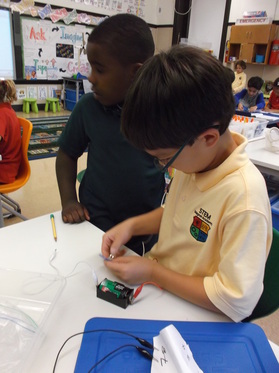
Without giving away too much, third graders are ready to start exploring current electricity! Since they know about electricity as the movement of electrons, they are surely curious to see what that means! Before getting any materials, third graders had to make a claim regarding how they thought a circuit would work. While the answers varied, some of the students' work is shown above.
After making a claim, they had the opportunity to try and create their own circuit. The parts they had to use to complete their circuit were:
1. Battery (in a battery holder)
2. Light bulb (in a light bulb holder)
3. Wires
We'll spend some time revising our claims now that we've collected some evidence to show how circuits work!
After making a claim, they had the opportunity to try and create their own circuit. The parts they had to use to complete their circuit were:
1. Battery (in a battery holder)
2. Light bulb (in a light bulb holder)
3. Wires
We'll spend some time revising our claims now that we've collected some evidence to show how circuits work!

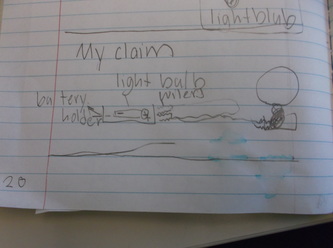
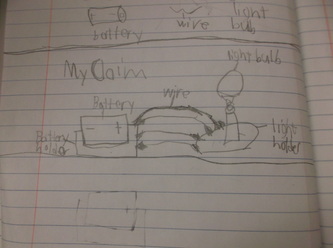
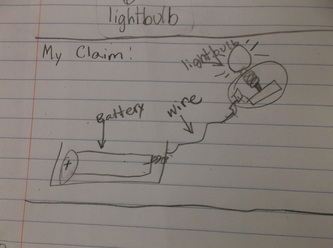
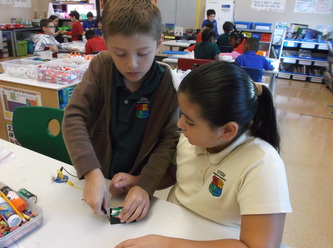
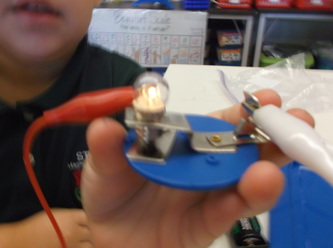
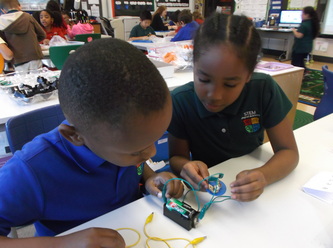
 RSS Feed
RSS Feed